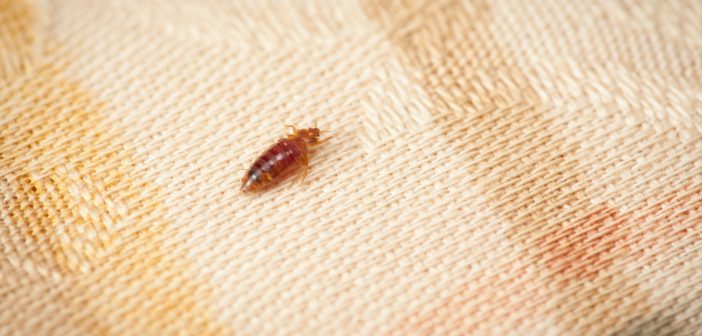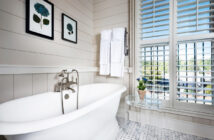
An effective IPM program can earn LEED credits and increase sustainability efforts.
by TIM HUSEN, Ph.D., BCE
One way hotel properties can address sustainability is by earning Leadership in Energy and Environmental Design (LEED) certification from the U.S. Green Building Council (USGBC), the national standard-bearer for green building leadership. The council has set criteria to earn certification through hotel design, construction or renovation and operational practices.Consumer interest in environmental issues continues to rise, with terms like “green,” “organic” and “sustainable” appearing in mission statements, company goals and business plans everywhere, not to mention product labels. Today’s consumers want the brands they buy to truly embrace sustainable initiatives that improve our planet and collective health. The hospitality industry is no exception. It’s becoming increasingly difficult to attract guests without environmentally sound practices.
What many hoteliers don’t realize is an Integrated Pest Management (IPM) program can help you earn LEED credits as it reduces the environmental impact of your operational foot print. Many hoteliers overlook this area of sustainable opportunity, or even believe that an environmentally responsible approach may not be as effective.
On the contrary, an IPM program may be even more effective. IPM is a proactive and environmentally responsible approach that uses multiple control methods to reduce the underlying conditions that attract pests. Even though this approach uses the least-hazardous options available for pest problems and limits chemical treatments to last-resort scenarios, it’s effective and sustainable through focusing on exclusion, sanitation and eliminating other conditions conducive to pest populations. An IPM program also gets your staff involved as part of a greener solution to pest control. By choosing a more sustainable pest management program, you can earn credits toward a LEED Existing Building Operations and Maintenance certification for your hotel. Taken as a holistic approach, the following suggestions can help any hotelier move toward additional LEED credits while making sure pests can’t check in.
INSPECTION IS IMPORTANT
An IPM program starts with an appointment with an IPM provider, your Pest Management Professional (PMP). A PMP will assess the pest pressures your property faces due to its location, climate, architecture and more. He or she will identify the hot spots (areas that are likely to attract pests) in and around your building. Your pest management provider will look for sanitation issues, pest entry points, unmanaged food and water sources and harborage zones, or places pests are currently inhabiting. Having your property regularly inspected allows your pest management program to consistently adapt to your hotel’s changing needs.
PREVENTION FIRST
The next step in IPM is a defensive strategy, and this is where staff involvement is especially important. Inside the hotel, there’s often a need for enforcing a stricter sanitation regimen around food handling, such as keeping food buffets covered, cleaning crumbs and spills immediately or using organic cleaners. Outside the hotel, there are often issues related to landscaping. Keeping vegetation trimmed and spraying down parking lots and walkways daily can prevent some pests. Meanwhile, garbage cans should always have tight-fitting lids and be cleaned routinely.
Entry points can be another weakness. We recommend sealing holes and cracks with weather resistant sealant and installing weather stripping on windows and doors. If your doors or windows have screens, make sure your maintenance team checks them often for tears. Consider installing an air curtain at the front doors of your hotel – with strong air flowing outward, flying pests like mosquitoes and flies are less likely to gain entrance to your building. Consider switching to LED light bulbs as they may attract fewer pests than fluorescent lights, and LEDs are more sustainable.
RODENT PATROL
Hotel staff are on the front lines of defense for identifying pest problems and stopping an introduction from becoming an infestation. It’s important to train them to report pest sightings as soon as possible. To streamline this process, have your pest management provider train your housekeeping and maintenance staff to identify the signs of common hotel pests such as rodents, cockroaches and bed bugs.
Rodents. Rodents are attracted to the readily available food and water supply a hotel offers, and they can be quite sneaky. Rodents can enter (or chew their way into) buildings through holes as small as a dime and rats as small as a quarter. Your staff should look for gnaw marks on wood, cinder blocks and walls. Other tell-tale signs include: grease stains on walls or other routine travel routes such as piping or conduit and the presence of droppings.
Cockroaches. These pests enjoy damp, warm places with ample food and water. They’re incredibly resilient and once they’ve found a safe harborage place in your hotel, a cockroach problem can worsen quickly. It’s important to seal cracks in kitchens and bathrooms, as these are their favorite places to inhabit. Train your staff to look for small black fecal matter left behind, as well as roaches themselves.
Bed Bugs. The cleanliness of your hotel means nothing to bed bugs. Their incredible ability to hitchhike allows them to attach themselves to clothing, luggage and other personal belongings. And in an industry made of travelers constantly coming and going, it’s clear why bed bugs are such a common occurrence. Adult bed bugs are about the size of an apple seed and are typically reddish brown in color. Their small size and ability to hide makes them difficult to detect during the day, so it’s important to look for the ink-like stains their fecal matter leaves behind. The stains may be located on the bed frame, headboard, mattress, mattress pad or nearby upholstered furniture. Have housekeeping monitor these areas, as well as alarm clocks, bed side tables and even hanging wall art for signs of live bugs or their shed skin.
DEVELOP A SOLUTION
If pest activity is found by your PMP or hotel staff, a plan consisting of the most effective and least-impactful treatments will be created. Thanks to scientific developments, there are numerous non-chemical and low-impact pest solutions available. Discuss the importance of using the least volatile treatments with the highest success rate in order to maintain your environmentally responsible plan.
The push to adopt sustainable practices in the hotel industry is present now and is likely to increase in importance to your guests and employees. Introducing an environmentally responsible, IPM-focused pest management regimen will help you earn LEED certification credits while being better for your long-term green business practices and reputation. ■
Tim Husen is technical services manager for Orkin. A board-certified entomologist specializing in urban entomology, he has more than a decade of experience in the industry. For more information, email [email protected] or visit www.orkincommercial.com.
PHOTOS COURTESY OF ORKIN




